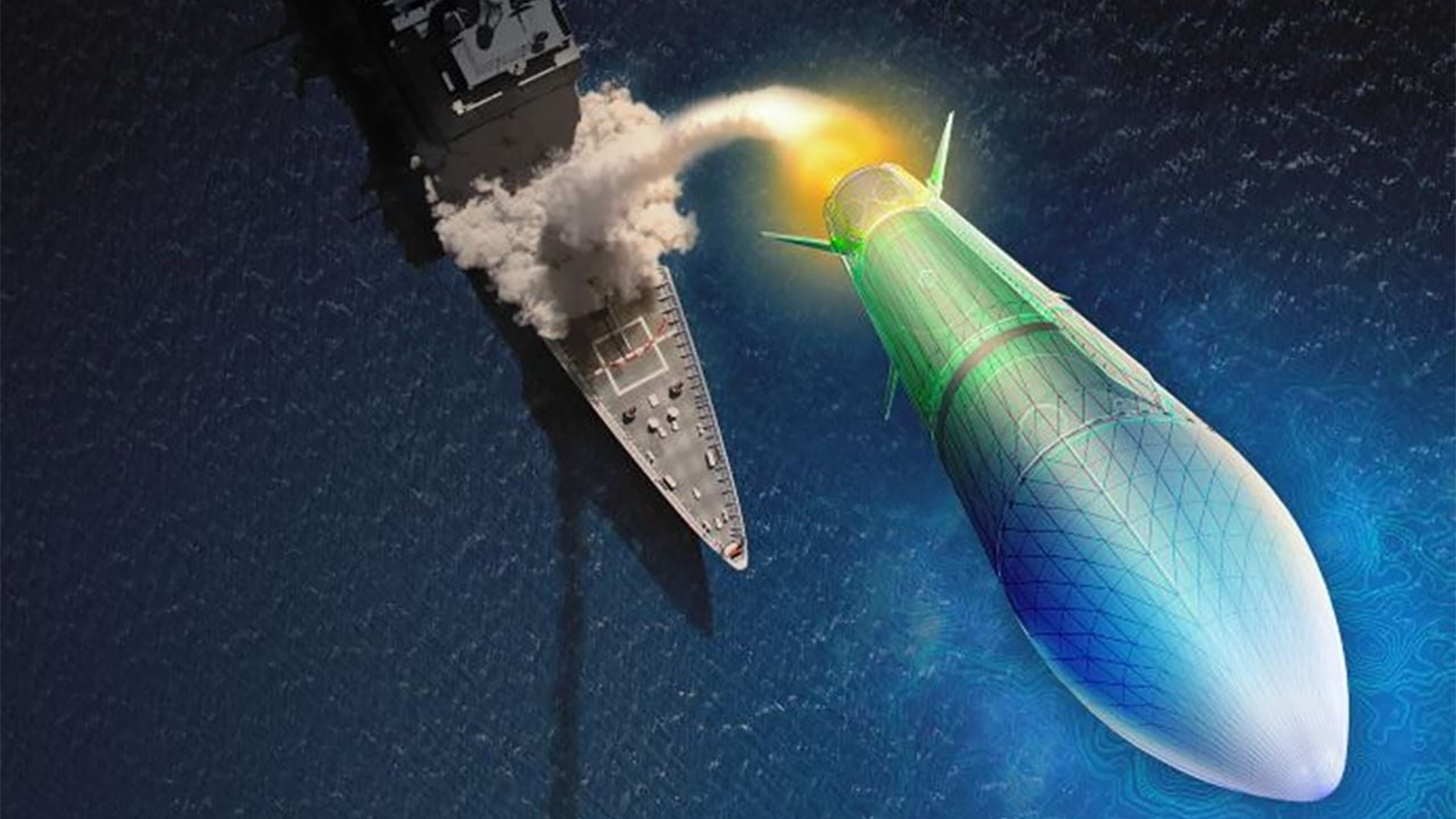
Raytheon Missiles Defense was selected by the Missile Defense Agency as one of the companies to develop and test the Glide Phase Interceptor, the first system specifically designed to defeat hypersonic threats. (Raytheon graphic)
WASHINGTON: It’s still too early to say when the Glide Phase Interceptor, designed to knock out hypersonic glide vehicles, will actually join operational missile defenses, according to Vice Adm. Jon Hill, who said today, “We’re just getting started.”
Hill, head of the Missile Defense Agency, said the program is so nascent that he couldn’t say if it would mature in the 2020s or 2030s. But he said his agency plans by the end of the summer to decide which of three defense contracting vendors will go ahead with the program — if not all of them.
Lockheed Martin, Northrop Grumman, and Raytheon Missiles and Defense are currently under contract for the concept design phase of the hypersonic missile defeat program.
“We’ve got three really great proposals and we may decide to stay on three, may drop to two, may drop to one. So it just really kind of depends,” said Hill at an event hosted by the Center for Strategic and International Studies. (In testimony before lawmakers earlier this month Hill intimated that the MDA would narrow, or “down-select,” the competition to two or even just one vendor by the end of the year, “depending on the maturity of those different proposals.”)
The Glide Phase Interceptor program is crucial to the agency’s future work defending against hypersonic missile threats and would target hypersonic missiles during the glide phase of flight.
The Missile Defense Agency is working on a wide array of missile tracking sensors and defeat capabilities to build a “layered” defense against incoming ballistic and hypersonic missiles.
As part of that, the agency is developing another program, the Next-Generation Interceptor, geared toward defeating Intercontinental Ballistic Missiles (ICBMs). Lockheed Martin and Northrop Grumman are competing for that program that will replace the military’s current fleet of ground-based interceptors.
According to Hill, that program is currently about one year ahead of schedule, with the first interceptors on pace to be delivered in 2027.
“That means flight testing earlier, that means ground testing earlier, that means we have a better sense of where we are as we move forward to upgrade the numbers of interceptors and the capability that we’ll be bringing forward,” Hill told the Senate Armed Services Committee last week.
One of the core focus areas for MDA is the defense of Guam, a key island in the Pacific home to US military capabilities including long-range fires and powerful radars like Aegis Ashore. US Indo-Pacific Command aims to have 360-degree sensor coverage of Guam, but critical to achieving that is the fusion of sensor data received from all domains.
MDA’s Command and Control, Battle Management, and Communications (C2BMC) program is a primary part of achieving that goal. The system integrates several missile defense platforms including Aegis, Terminal High Altitude Area Defense, Army Integrated Air and Missile Defense Battle Command System or the Space-Based Infrared System.
“You really need to have an area that brings in all the space- and land-based, and sea-based assets from a sensor perspective and fusing that data and then selects the appropriate way to go after it,” Hill said.
Hill also noted that the Long-Range Discrimination Radar, which feeds into C2BMC, will undergo a test later this summer with a separating missile to test all the discrimination functions of the system. LRDR is supposed to be be able to identify an enemy warhead from debris or decoys.
Aegis sea-based terminal will complete testing with the Japan’s Aegis-equipped ship coming up.






















